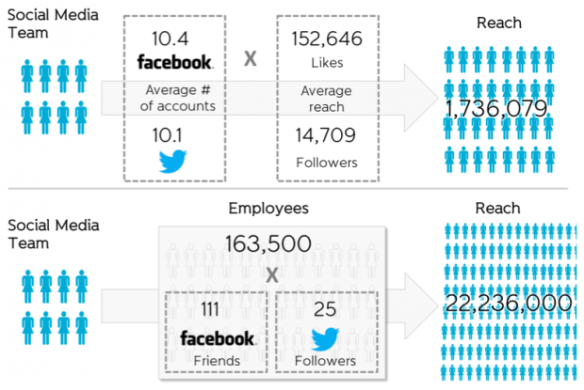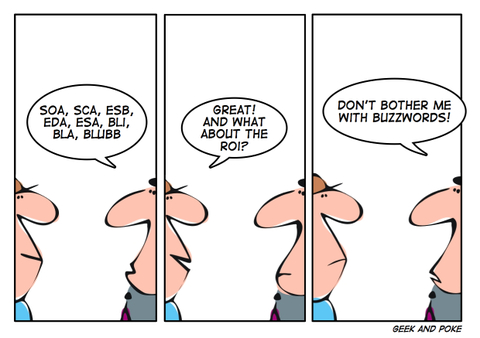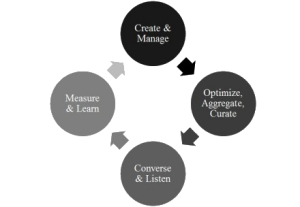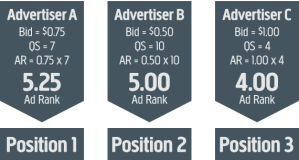I’ve written a lot about blogging lately. How can a blog help you? If you refer to my previous posts, “Blogging for SEO” and “Turning Your Blog Into Money,” you’d learn that blogs are not only great for content, but they can be used as an a conversion asset and as an opportunity to increase your website’s SEO strategy.
Blogging can be easy if you know how to engage your audience and create compelling content. I’ve seen many different examples which establish a framework for blog writing. The following template from Content Rules 2010, is a great skeleton for any up and coming blogger.
Post Title
Tell the readers what they’re going to get by reading your post. Titles like, “How to _____,” and “10 Tips to _____,” are simple titles that work.
First Sentence
The first sentence is where you hook the reader. Ask a question or make a bold statement to trigger some interest with your audience. Your first sentence creates some dialogue about the blog’s topic. Keep this sentence simple and stick to one idea.
Next Paragraph
This paragraph investigates possible answers to the question you posed in the first sentence. Share why you’ve made your bold statement and find proof that supports your idea. This paragraph is where you back you up your ideas.
Bullets or Numbered Lists
Lists are an easy way to organize your key points. Add a list with three or four points to reinforce the ideas you outlined above.
Add an Image
Pictures can say a thousand words. Infographics, pictures, and videos provide even more information and add visual interest to your blog.
Close with a Question
Encourage interaction by asking a question. This is your opportunity to give readers a reason to come back to your blog.
The above template is just an outline or framework for an effective blog. By adding your personal flare and tone, you’ll engage an audience and establish a following. Apply the following list of blogging guidelines to create truly compelling content:
- Define your purpose. Define your purpose by asking these questions questions – Who is your audience? What do you want to achieve?
- Set a reliable schedule. Timing is everything. If you are going to post once a week, keep it on the same day of the week so your readers can know when to expect your posts.
- Mix it up! Use different lengths of blogs, varying the content.
- Move beyond the written word. Use images and videos to keep the readers interested.
- Size matters. Don’t make your blog too short or too long. The length depends on the topic of your blog. Make every word count.
- Learn to write killer headlines. Pique curiosity.
- Design is important. Use a design that flows nicely and is functional. Incorporate a search bar so people can browse your blog. Invite people to follow you by using different types of widgets.
- Create momentum. Add a call to action and incorporate fascination triggers.
- Consider comment moderation. Moderate comments by removing spam or off-topic comments.
- Categorize and tag everything. Categorizing and tagging your blog makes it easier for search engines to index your content.
- Write the way you speak. Be conversational in your writing to encourage interaction.
- Don’t overthink. Leave room for your readers to comment.
Alright, so we know have the tools to create amazing blogs, right? Both the template and guidelines should help you create engaging blog posts. Lets take a look at some popular bloggers and comment on their blogging style.
First, we have Seth Godin. When Seth talks, people listen. Seth is a great blogger and understands his audience. Seth sticks to a reliable schedule – posting daily. By posting daily, Seth sets an expectation for his readers and they know to check daily. I enjoy the varying sizes of Seth’s blog. He uses both long and short format blogs to get his point across. The blog has a simple design with different buttons for sharing. There is no question Seth can write, but his blog is more of a one-way communication. Seth doesn’t allow for commentary on his blog which I feel is a missed opportunity. His blog gets tons of traffic, so why not chat with his readers rather than chat at them? Also, Seth’s blog does not go beyond the written word by incorporating any photos or videos.
Next, Mitch Joel. Mitch uses simple headlines which tell the reader about the topic of each blog. Like Seth, Mitch posts blogs daily. His content is very informative and well-written. Mitch’s blogs have a functional and moderate in length. He breaks up his content by bolding sentences which highlight the key takeaways or subject changes. Mitch has conversations with his readers by allowing commentary.The design of his blog is great; however, his website design is a little crowded. He goes further than the written word by including both videos and images in most of his blog posts. Overall, I’d like to see Mitch pose more questions to really get his readers thinking.
Lastly, there is Bernadette Jiwa. I feel as though she nails all of the blogging guidelines that I have highlighted above. Bernadette captures her reader through her titles and keeps them engaged throughout the reading by telling a great story. Her posts vary in length, but are usually long. The images she uses fit with the topic of her blogs. She has a very clean design and incorporates social and other calls to action. Bernadette allows for commentary and obviously moderates the conversation. She asks questions and replies to posts. Of the three, I would have to say Bernadette is my favourite.
There you have it! You now have the tools to create a compelling blog. I encourage you to take a look at the bloggers I have mentioned and share any of your thoughts.
Who is your favourite blogger?











